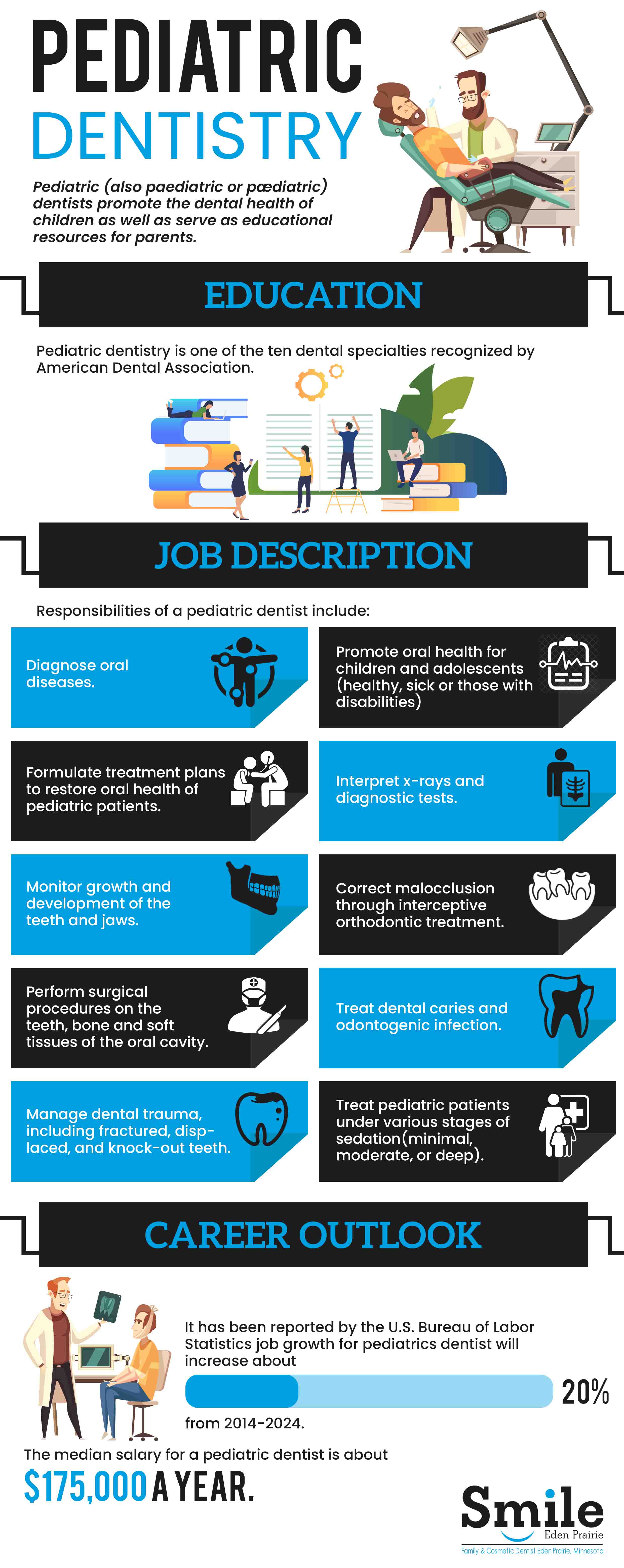Branches of Dentistry: Pediatric dentistry
Pediatric dentistry is a branch of dentistry which focuses on children starting at birth through adolescence.
The goal of pediatric dentists is to promote the oral health of children and help educate their parents. The American Academy of Pediatric Dentistry (AAPD) and the American Academy of Pediatrics (AAP) recommend that a child first visits the dentist within six months after their first tooth or before their first birthday. The AAPD also stresses the importance of establishing a relationship between the child and their dentist and helping create their dental home. Early oral care and examinations help detect tooth decay. Early detection is critical for maintaining good oral health. In addition, parents are educated on how to provide thorough home care which includes brushing, flossing and the use of fluoride.
Education
Pediatric dentistry is a dental specialty which is recognized by the American Dental Association (ADA).
In order to specialize in pediatric dentistry, candidates receive additional training in an accredited postgraduate residency program. Pediatric dentistry residency programs take at least 2 years to complete. At the end of the residency, dentists are awarded a certificate in pediatric dentistry. The specialized training covers all areas of oral health care for infants through adolescence. The program includes behavior management, preventive dentistry, restorative dentistry, sedation dentistry, oral trauma management, interceptive orthodontics, oral medicine and pathology. A large part of residency training program focuses on treating pediatric patients in a dental clinic or hospital operation room.
Following the successful completion of residency training, the dentist is Board eligible for the American Board of Pediatric Dentistry (ABPD) examination. The first part of the Board exam is a written exam and the second part is an oral examination which tests both clinical knowledge and skills. Successful completion of board certification results in Diplomate status in the American Board of Pediatric Dentistry. Once complete, the resident is allowed to practice as a Board-certified pediatric dentist.
A pediatric dentist is responsible for the following:
- Diagnosing oral disease
- Promoting oral health for children and adolescents
- Creating treatment plans to restore the oral health in pediatric patients
- Interpreting x-rays and diagnostic tests
- Monitoring growth and development in the teeth and jaws
- Correcting malocclusion through interceptive orthodontic treatment
- Performing surgical procedures on the teeth, bone and soft tissues within the oral cavity
- Treating dental caries and infections
- Managing dental trauma; including fractured, displaced and knocked-out teeth
- Treating pediatric patients who are under various level of sedation
One of their main concerns for pediatric dentists is to prevent tooth decay. In addition to working with the teeth, pediatric dentists also evaluate a patient’s complete oral health. They also look for any signs of oral cancer and perform biopsies, when necessary.
Career Outlook
According to the U.S. Bureau of Labor Statistics, job growth for pediatric dentist is expected to increase about 20% by 2024. The median salary for pediatric dentists is $175,000 a year. The average annual pay for a pediatric dentist in the United States is $245,671 annually. A majority of pediatric dentists own a private practice or work as an associate. Pediatric dentists are also able to work at dental schools to educate and train future pediatric residents.

